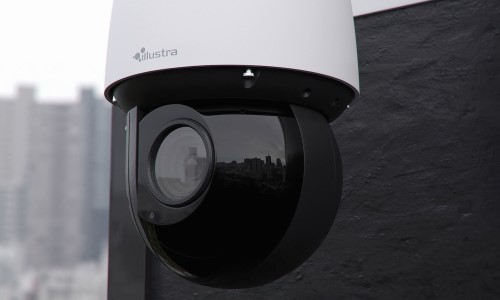Why Most New Dome Cameras No Longer Need That ‘Bubble’
As the resolution of cameras has improved, the quality of the bubble cover cannot keep pace. Here are the positive effects of eliminating the bubble.

Since the days of analog surveillance, the industry has added a polycarbonate-type cover (bubble) around dome cameras.
In the early days of IP megapixel (MP) cameras, the adverse effect of the bubble was negligible. However, as the resolution of cameras has improved, the quality of the bubble cover cannot keep pace.
After removing the bubble, the MP resolution sensors are not hindered and can deliver superior resolution and image quality. The elimination of the bubble has other positive effects.
For example, sports stadiums often combine artificial and natural light, which can catch the sides of camera bubbles creating reflections and glares that obscure the image. In addition, when dome cameras have built-in infrared illuminators they are free from any possibility of internal reflection.
By utilizing built-in illuminators, there is a huge saving with respect to installation, operational and environmental costs. As the illuminators are built-in and continually following the camera’s field of view, the requirement for separate illuminators (more lamps, external wiring, time and cost) will be eliminated.
Surveillance equipment often has a limited visual field that stops at the horizon. Historically, the middle of the lens has been the clearest area for capturing video. For example, if you place a mini-dome camera on a wall looking down a corridor, due to the nature of the lens, it is possible to have blind spots if the camera can only tilt up to the horizon.
However, advancements in lens capabilities are allowing cameras to see clearly even above the horizon. When looking up a high street in a town center with a pan, tilt and zoom lens, many objects will appear just above the horizon and can be clearly seen since they are not obstructed by the edge of the bubble.
The bubble on most dome cameras is not totally spherical. Toward the edge, it flattens out before it enters the housing. At this point, the distance can change between the lens and bubble and can impact the focus of the camera.
Peter Ainsworth is Product General Manager, Video Products for the Global Building Technologies and Solutions, Security Products business of Johnson Controls
If you enjoyed this article and want to receive more valuable industry content like this, click here to sign up for our FREE digital newsletters!

Security Is Our Business, Too
For professionals who recommend, buy and install all types of electronic security equipment, a free subscription to Commercial Integrator + Security Sales & Integration is like having a consultant on call. You’ll find an ideal balance of technology and business coverage, with installation tips and techniques for products and updates on how to add to your bottom line.
A FREE subscription to the top resource for security and integration industry will prove to be invaluable.








I cannot find any discussion about the value of a bubble. I was wondering if in a humid climate like Florida the bubble cover over a security camera just exasperates the problem of moisture damage.